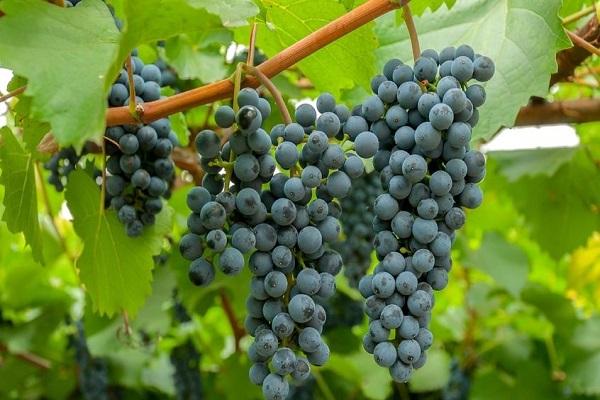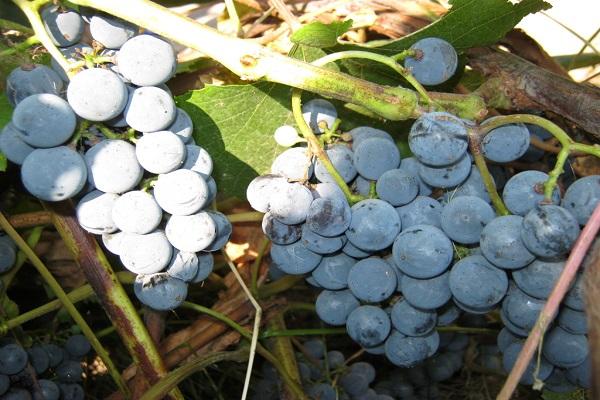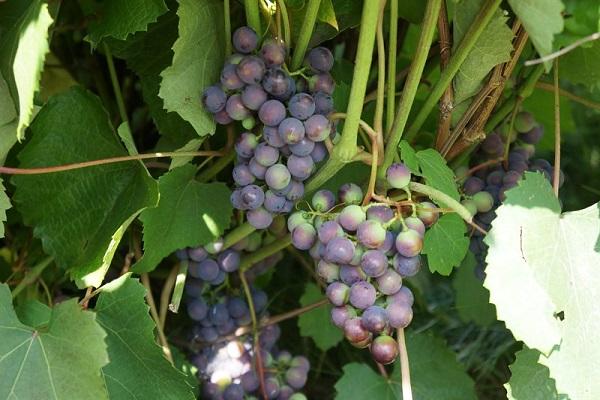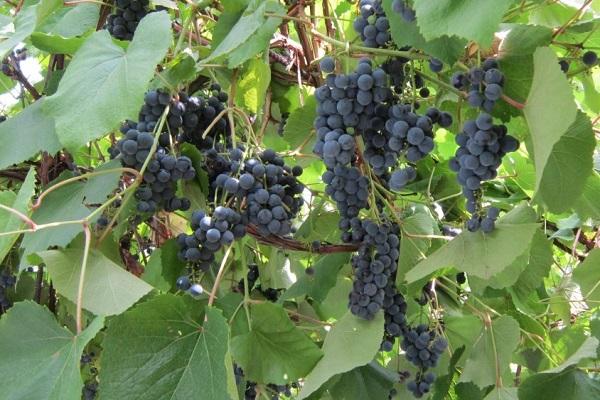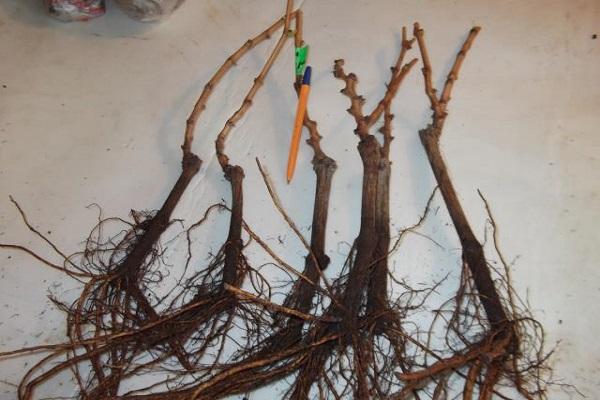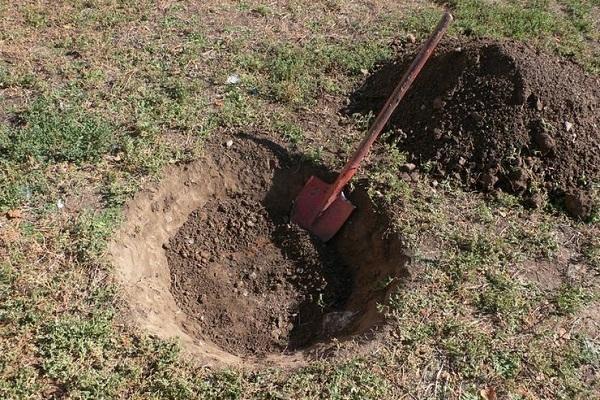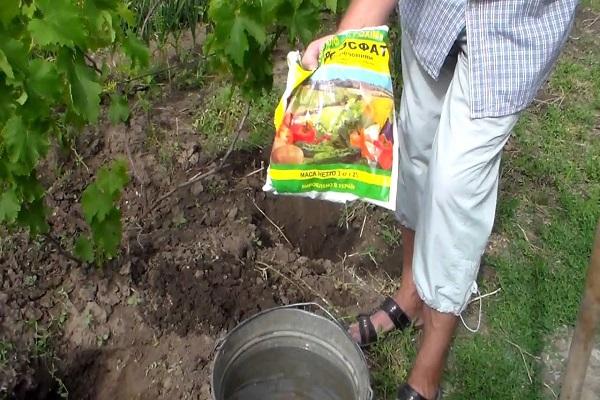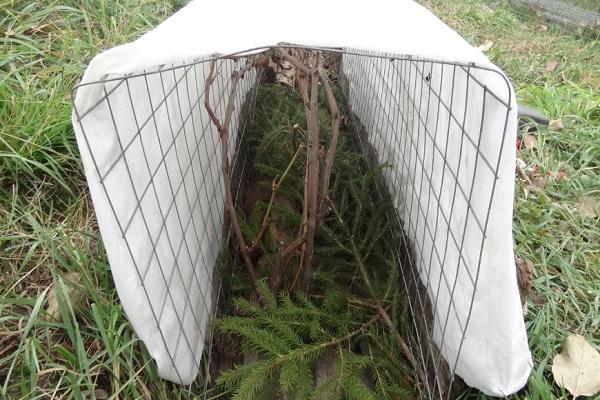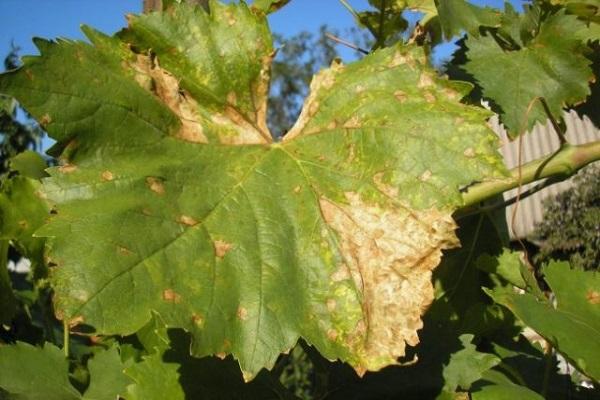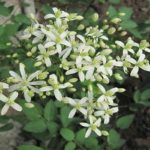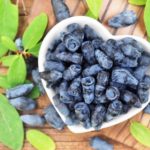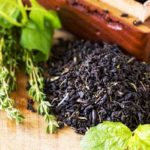Taiga grapes have many advantages. This plant is characterized by high resistance to diseases and pests. It easily tolerates strong drops in temperature and manages to ripen in the cold northern climate. These advantages have made the crop very popular among many farmers. To achieve success in its cultivation, it is worth considering some nuances.
- A little history
- Description and characteristics of grapes
- Bushes
- Bunches
- Productivity
- Maturation period
- Winter hardiness
- Main positive and negative aspects
- Cultivation
- Landing dates
- Selecting a location
- Seedling preparation
- Site preparation and planting
- Variety care
- Watering
- Fertilizers
- Bush formation
- Shelter for the winter
- Diseases and pests
- Harvest and storage
A little history
There is very little information about the origin of this culture. There is no information about which scientist developed this unique plant. It is known that Taiga grapes were originally grown in the southern regions of the country.
However, it gradually began to spread to the northern regions and, as a result, took root in the taiga forests. The culture has become so frost-resistant that it can easily withstand even Siberian frosts.
Description and characteristics of grapes
Before planting a crop in your garden plot, you should familiarize yourself with its key characteristics.
Bushes
This variety is characterized by tall bushes, which are characterized by vine growth of 5-7 meters per year. There are 3 clusters on each shoot. With adequate care and proper pruning, you can get up to 100 kilograms of grapes per year.
Bunches
This plant is characterized by small clusters. Their weight does not exceed 200-400 grams. The fruits are round in shape and weigh 4 grams.
The berries have a pleasant sour taste.
Productivity
The yield parameters are quite high. With strict implementation of agrotechnical measures, it is possible to obtain up to 100 kilograms of berries from a bush. Such indicators can be achieved 7-8 years after planting.
Maturation period
The grapes of this variety are characterized by an extremely early ripening period. This allows the crop to be planted even in regions with harsh climatic conditions. On average, 90-95 days pass from the beginning of the growing season to harvesting. In areas with a temperate climate, it will be possible to get the first fruits at the end of summer.
Winter hardiness
The berries may well remain on the bushes until frost. They will not rot even under autumn rains. This variety is considered very resistant to low temperatures.It can withstand temperatures down to -32 degrees.
Main positive and negative aspects
This variety is very popular among gardeners who live in the center and northern regions of Russia. It has many advantages:
- excellent resistance to frost;
- rapid development of the bush;
- high yield parameters;
- available methods of reproduction;
- nutmeg notes in the taste of the fruit;
- early maturation;
- resistance to fungi and other types of infections.
An indisputable advantage of culture is its unpretentiousness to living conditions. The plant can be planted in areas with different climates. It can be planted in almost any soil.
The Taiga variety has no serious disadvantages. At the same time, experienced gardeners note that it has a normal taste. That’s why grapes are often used for processing. However, many people also use it fresh to replenish vitamin deficiencies.
Cultivation
To achieve success in growing crops and phenomenal yields, it is necessary to pay attention to planting work.
Landing dates
It is recommended to plant the crop in the ground in the spring. Carrying out planting work in autumn is permissible only in areas with warm winters.
Selecting a location
The bush should be planted on the south side of the site, which warms up well. It is important that the plant is not exposed to drafts. During planting work, it is worth placing a trellis or poles near the bush. This will ensure normal development and good branching of the culture.
Seedling preparation
When purchasing a seedling, you should carefully examine its condition. It is important that the plant meets the following criteria:
- It had a powerful root system with many thread-like fragments.
- It had a light brown tint to the roots on sections.
- Had a balanced ratio of top and bottom. This means that the root system must correspond to the size of the above-ground part of the plant.
- It was distinguished by smooth leaf plates. They should not be deformed or have yellow tips.
Before planting a bush in open ground, it is recommended to soak it in water or use a growth stimulator.
Site preparation and planting
To plant this plant you will need a hole measuring 100x100 centimeters. It is worth adding 20 centimeters of sand or crushed stone, 12 centimeters of a composition based on sawdust and crushed bricks to the pit. Then you should use the heated soil from the recess. It is recommended to mix it with humus and wood ash. You can add a glass of oats to the composition.
It is recommended to cover the recess with black film for a day. This helps warm the soil. 2 hours before planting, the seedling should be taken outside so that it adapts to the climate.
Then make a 40-centimeter depression in the hole and place the seedling in the center. Level the root system and sprinkle the plant with soil. Place a support and water with warm water. Finally, mulch the tree trunk with fallen leaves or sawdust.
Variety care
In order for grapes of this variety to have high yields and rapid growth, they need to be provided with adequate care.
Watering
In the first year after planting, it is recommended to water the seedling every other day. If the climate is quite humid, the number of waterings is reduced to once a week. In the second year, the plant is watered in hot weather once a week.
If precipitation is observed, there is no need to moisten the soil.
Fertilizers
It is recommended to feed the crop twice a year. In the fall, it is worth adding organic compounds. Bird droppings, humus, and compost are suitable for this. In spring it is recommended to use minerals. To do this, for 10 liters of water you can take 20 grams of superphosphate, 10 grams of ammonium nitrate and 5 grams of potassium salt.
Bush formation
It is recommended to prune the plant in spring. During the procedure, it is worth removing dry branches and bunches. The procedure is not carried out in the fall. In severe frosts, this will lead to freezing of the shoots.
Shelter for the winter
When growing a crop in a region with a harsh climate, it must be covered. To do this, perform the following actions:
- Plywood is placed on the ground near the plant.
- Remove the vine from the support, tie it up and carefully place it on the flooring.
- Cover the plant with a tarpaulin or spruce branches. Dry soil is poured on top.
When snow falls, you should throw a large snowdrift on the bush. Thanks to this, the plant will easily overwinter, and its root system will not freeze.
Diseases and pests
This plant has strong immunity and practically does not encounter the development of diseases or pest attacks. The only problem is the risk of mildew infection. In this case, you will have to use chemical and folk remedies.
Harvest and storage
Before picking the fruits, you should carefully examine the bunches. The berries must be completely ripe. It is worth cutting the crop with sharp scissors or pruners. Store grapes in a dry and cool place.
Taiga grapes are very popular among gardeners in the northern regions. The crop is highly frost-resistant and manages to produce a harvest even in cool summer conditions.

